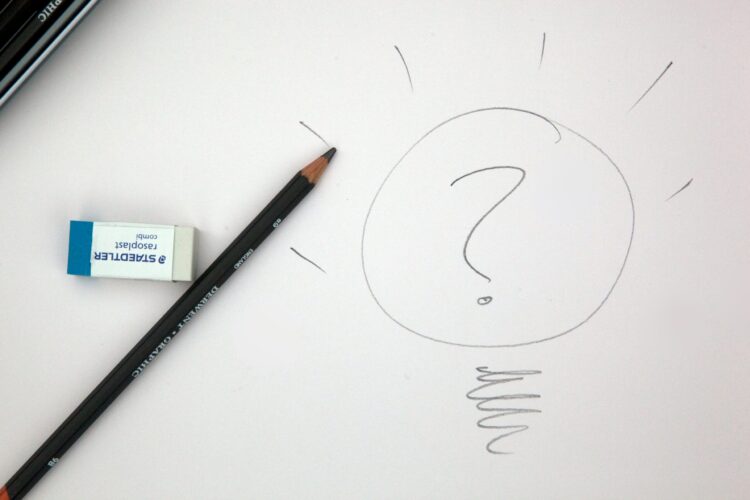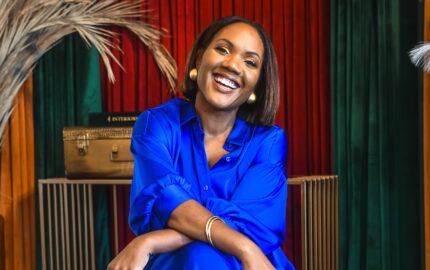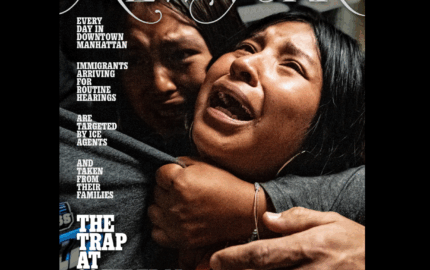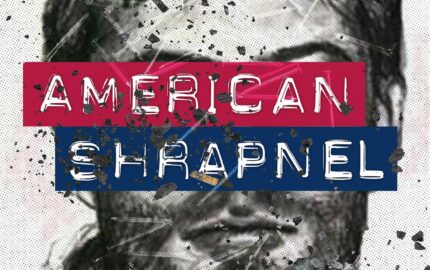EDITOR’S NOTE: For other posts in the occasional series about effective editing, read our interviews with Mike Wilson of The New York Times and Scott Stossel of The Atlantic. The below interview with Lynda Robinson, an enterprise editor at the Washington Post, is followed by her annotation of a sensitive story edit.
For longtime journalist Lynda Robinson, stumbling into the editing track was a happy accident. Robinson — who is now based in the Outer Banks, North Carolina — was working as a reporter for The Baltimore Sun in 1995 when a merger between the jointly owned morning and evening newspapers threatened her job. Robinson had been writing for a decade by then and wasn’t eager to leave it behind. But an editing role opened up at the Sun, a lifeline that she describes as her “escape route.” Three decades later, she says editing is her true calling.
Robinson spent several years at the Sun as deputy national editor before helming a now defunct D.C.-based magazine called Capital Style. After that publication shuttered, Robinson moved to The Washington Post in 2000 as a local enterprise editor, where she shepherded ambitious narratives by a stable of enterprise writers. She took a buyout from the Post earlier this year and will wrap up editing assignments through 2024.
Robinson has had a hand in some of the Post’s most sweeping longform narratives and award-winning work across a range of topics, such as an investigation into hundreds of law enforcement officials who have been accused of sexually abusing children and a wave of Christian home-schoolers who are renouncing their education.
The Christian home-schooling story centers on one Virginia couple — Christina and Aaron Beall — who were obedient disciples of the religious home-schooling movement before defying their upbringing and community to send their children to public school. This decision caused a rift in their family that Washington Post reporter Peter Jamison followed intimately over the course of a roughly 3,000-word feature.
Storyboard spoke with Robinson about why upfront communication is essential to editing and how she structures her time coaching reporters. She unpacked some of the specifics of her approach to the home-schooling story; a partner post features Robinson’s annotation of that story, which provides an interesting complement to Peter Jamison’s earlier annotation of the same piece. Our conversations have been edited for length and clarity.
What drew you out of reporting and into editing?
That was the result of one of the many cataclysms I lived through in the industry. At that time in Baltimore, there was a joint agreement between a Morning Sun and an Evening Sun, and they were being merged. It meant there were duplicates for every job and they were requiring we all reapply for our jobs. There was a buyout on the table and general panic about what was going to take place. I was a late rewrite person three nights a week and had two days on general assignment. The national editor of the Morning Sun, Ed Goodpaster, approached me and asked if I wanted to replace his deputy, who was leaving. When he asked me, I remember thinking, ‘God, who would ever want to be an editor? That sounds like a terrible job.’
But then I thought about it a little bit more. There were only a few parts of the Morning Sun not duplicated by the Evening Sun, which were the foreign bureaus and a big Washington Bureau with national correspondents. So this editing job became my escape route.
What are the parts you thought you’d hate? And what did you find a natural fit?
I think a lot of reporters walk around thinking, ‘What do these editors do all day?’ I was expecting it to be boring. A part that I turned out to be really good at was that I’m very decisive. As deputy national editor, you had to be decisive and have good news judgment. I was alone on the night of the 1992 Los Angeles riots. My late rewrite skills came in very handy. That was a trial by fire because I wrote our story five times every half hour or 40 minutes. I was taking all the wires and crafting a story about what was happening in Los Angeles because we didn’t have anybody on the ground.
Reporting is a craft and so is editing, and you can’t learn it unless you actually do it.
I also found I had a good eye for stories and story ideas. The beauty of editing is you can have a tremendous amount of influence on the news product — far more influence than you can have as one reporter pursuing one story. You get people excited about these ideas and get to watch reporters go out and do them. Some people who become editors go back to writing as soon as they can, but I never had any desire to go back. From the second I started, it became clear this is what I was meant to do. This was a calling.
Which editors trained you? Where did your knowledge absorption come from?
I was working for the Sun’s national editor, Ed Goodpaster. Then when I moved to Washington, I was working for the Sun’s Washington bureau chief, Paul West. I absorbed a lot of knowledge from them. It’s very similar to going to a fire for the first time as a reporter. Unless it’s a really huge fire and there are a lot of other reporters around, you’re just learning by doing it. Each story that I work on makes me smarter for the next one, and that’s a process that has never changed. I’ve edited four books now. I learn from each and every story that I work on and each and every chapter of a book. You’re taking what you learned and applying it to the next. Reporting is a craft and so is editing, and you can’t learn it unless you actually do it.
For reporters who are trying to gain editing skills or figure out if editing is something they want to pursue, what are some avenues of practice and training?
At The Post, there are a lot of opportunities for peer editing. People get practice when they’re editing colleagues’ work. Sometimes they edit one another before they show me a story, particularly if someone in the building is an expert on the topic. Also, instead of doing reporting shifts on the weekend, Post reporters can raise their hands and say, ‘Can I do editing shifts on the weekend instead?’ A third way to hone those skills is teaching. If you were, for instance, going to teach a writing class at a local college, you’ll be editing the work of your students.
For freelancers, I would consider being part of a writers collective where people share their work and talk about it, and where story ideas get discussed and debated. There are lots of places around the country where freelancers get together and critique each other’s work. Another is to keep your eyes open for a part-time editing gig or something occasional.
Can you share a window in your thought process? When copy first reaches your inbox, what are your steps and what do you do first?
We’d probably need to back up, because my process is very much oriented to the front end. Too many people are fixated on ‘Here’s the story.’ Not enough thought and time goes into the front end of the process, which is, ‘What story are we pursuing? Who are their characters? How are we reporting it? What can we see? What is the point of tension in the story? What’s going to drive that? How long do we think it should be? How long do we think it might take?’ When you are working on narrative stories, deciding on ‘What is the story?’ is the first decision that an editor helps a reporter make. By the time I’m handed a story, I’ve discussed in minute detail what’s going to be in it. It doesn’t materialize out of thin air. The least interesting part of the process is what happens after I get the story.
Take us into the minutiae of how you approach those early conversations. What does that process entail? Is this just with staff writers you work with regularly? Are you having conversations with them about every idea? Are they coming to you or are you pitching them?
It’s a combination of things. I will have ideas and pitch them to the reporters, and vice versa. It might be helpful to actually talk about the homeschooling story, and that process.
That began with a story that Peter Jamison wrote about a gubernatorial candidate in Maryland, Dan Cox, whose dad was Gary Cox. Gary Cox was a transformational figure in the homeschooling movement. When writing the profile of Dan, Gary wouldn’t talk to Peter. Neither would Dan. The story focused entirely on Dan’s education. After it appeared, Peter knew there was a possible series to be done about the explosion of homeschooling in the U.S.
Then a comment was placed on that Dan Cox profile that one of the Post’s comment moderators flagged to Peter. When you register with The Post, you can’t comment unless you’ve provided an email address. This person said he had been part of the Cox family’s religious community and had suffered incredible harm as a result.
How did the process unfold from there?
Peter emailed the commenter, who responded 90 minutes later. He ended up being the key person in the homeschooling story, Aaron. When Peter showed me the comment, we both agreed there could be a really powerful story here but it meant having access to Aaron and his wife. Peter went to see them and persuaded them to let him tell their story. Homeschooling had created an incredible rift in their family and it was very fraught. This story required a lot of trust and a lot of time. We made many efforts to talk to both sets of parents, but ultimately couldn’t. We wanted to be able to represent everyone in the family, but text messages and emails allowed us to at least represent their point of view.
To cultivate that trust, you have to be available to people.
A story like this required a lot of discussion on the front end. ‘What did we want to see? Where should we start the story? How do we want to explore the issue of Christian homeschoolers renouncing their own education?’ There were a lot of incredibly tricky questions here and Peter spent quite a bit of time with this family getting to know them. Sometimes a protagonist, like Aaron, is key to a broader movement; other times you set out to explore a particular issue and look for the character to do it. But this is a story we never could have found on our own.
Stepping back a bit more broadly, how would you describe the essential ingredients for strong chemistry between an editor and writer like Peter?
As important as it was for Peter to gain the trust of the Bealls, that’s how important it is for me to have trust with Peter. When I work with reporters, I am always cultivating trust. When we’re talking about how a story should begin or discussing how a story should be structured, that discussion has to come from a place of belief in me.
To cultivate that trust, you have to be available to people. That means when my reporters are on the road reporting all day, they call me in the evening. I sit there with them on the phone for an hour and they tell me what they’ve got. It can be incredibly time-consuming. But when they’re ready to structure the story, I know what their reporting shows because we’ve already talked about all of it — not in one conversation, but in a series of conversations.
That’s remarkable to me because I can imagine from a reporter’s perspective, they have the full panorama of everything that they’ve gathered, while you have a fresh lens and are keeping an eye on the product and the big picture. Yet, as an editor, you make the effort to get to know their material as intimately as they do.
It’s really important to their process because when they come back from a really incredible day of reporting and are telling you what they saw, it’s distilling for them in their mind: What was most important? What was most remarkable? What struck them the most? It’s very much like when you tell a story to any friend, someone says, ‘Well, tell me what happened.’ You’re using shorthand. For long pieces, those front-end conversations are happening simultaneously to the reporting. That’s crucial. It’s not happening weeks after; it’s happening hours after. If your reporter is getting back at 7:30 p.m. from a trial that is going to be the basis of a long story, they call you at 8. Sometimes you have to say, ‘Let’s talk in the morning.’ But the fresher it is, the better the details. Not making the time isn’t really an option. Because otherwise, what’s happening is that somebody’s working on a story for weeks or months, and you have no idea what the story is.
After your reporter files a draft, how would you describe your style or approach to shaping the language? How do you think about having a light touch versus a heavy touch?
The goal is to say ‘yes’ as much as possible and ‘no’ as little as possible. Because of the front-end part of my process, they don’t give me a story that I’m not expecting. That would be a big problem. When editing goes awry, it generally means the editor is being caught off guard by what they’re being given, and that means the communication sucked on the front end. I work with remarkable writers. I’m not rewriting any of them. If you say to one of them, ‘This transition isn’t working, and let’s try the top of the story this way,’ or ‘I had an idea about the kicker,’ that’s all fun. But if you have to blow a story up, that just means that you failed as an editor. It’s definitely on the editor to facilitate that communication, not the reporter.
When you think about some of your favorite writers to edit, what qualities do they share?
I love their dedication to reporting and being there to see things firsthand. You can’t write around shoddy reporting. The reporters on my team were never satisfied with surface reporting. They went back again and again, probably too many times, and sometimes were frustrated when they couldn’t get more access or couldn’t get their hands on documents like medical records, legal records or sealed files. They all shared a complete and total devotion to a 360-surround. A lot of people talk about writing, and of course writing is important, but you can’t write your way around thin reporting.
What kinds of pieces do you find most challenging to edit?
Multi-character stories are more challenging than single character stories. Stories that rely almost entirely on reconstructions rather than first-hand reporting are also more challenging, because where are you getting those details from? You can look to text messages and emails and Instagram. Real time is easier because you’re not relying on people’s memories, which are faulty. Maybe it’s court transcripts, or body cam footage where you can actually see the interaction.
I love when stories are really complicated. It means there’s a lot there. And then you have to make really hard choices about what to leave in and what to leave out.
How do you practice strengthening the muscle of making really hard choices to ‘think like an editor?’
I think a lot about pacing in stories. Length is less important to me than how the story reads. Does it read fast? This is subjective, obviously, but when you’re editing a story, you can tell when it’s slowing down. Sometimes I will say to one of the writers, ‘It’s just too slow here.’ Or ‘Let’s get rid of this entire section because it’s slowing everything down and it’s not that interesting,’ or maybe reduce it to one graf. Again, this comes back to their trust in me because if you’re asking somebody to lose an entire section of the story, that can be painful.
…when you’re an editor, your success comes from the success of your reporters.
You have to be sharp-eyed about it, and sometimes hard-hearted. You want the best possible version of the story and the reporter has to believe that’s what you’re dedicated to, but you also have to represent the reader. Are they going to feel compelled to keep going? What are you withholding? What are you forcing people to keep reading to find out? Will they find it not just interesting, but compelling? Long narratives require way more than just being interesting.
What qualities do you think help someone shine in this kind of role? What are some of the crucial ingredients to a fruitful experience as an editor?
The most important thing is it’s not about you, at all, ever. It’s not a good role for people who want a lot of acclaim or attention. It’s not your story; it belongs to the writer. You have to be comfortable with being self-effacing, in a way, because your byline is not on the story.
In the last few years, The Post has started putting editing credits at the bottom of the story. My name was never on stories I’ve edited before that. But you have to take pleasure from the success of other people because when you’re an editor, your success comes from the success of your reporters. If they’re not successful, then you’re not successful.
***
Carly Stern is an award-winning enterprise journalist based in San Francisco who covers health, housing and economic security.



